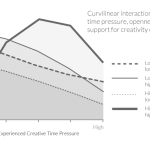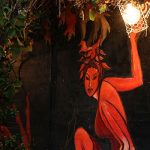Why Silver Lake?
Paradox: In 2012 Forbes ranked Silver Lake the hippest hipster neighborhood in the United States. It can’t be that hip if Forbes says so.
The ranking included walkability; the number of coffee shops per capita; assortment of local food trucks (and their zagat scores); the number and frequency of farmers markets; locally owned bars & restaurants; and the percentage of residents who work in artistic occupations.
I thought about this ranking while reading the urban friction section of Jonah Lehrer’s book “Imagine.” (Yes. OK. His book was recalled / is out of print / not cool because his made up Dylan quotes. But I find the book an amazing read.)
“Imagine” includes studies and speculations by urban theorist Jane Jacobs on the “dance” of street interaction. That this “dance” encourages the “‘mingling of diversity,’ allowing city dwellers to easily exchange information.” She called this “knowledge spillover.”
Jane Jacobs’ speculations are supported by scientific equations developed by physicists Geoffrey West and Luis Bettencourt. In the article by Emily Badger: “Bettencourt’s theoretical framework suggests that a kind of optimal city exists when we have the most social interaction – and social and economic output coming from it – with the least cost of connecting people and goods and ideas to each other. A sprawling city, for instance, isn’t reaching the full potential it could achieve if more people moved into town in denser development. Likewise, a dense but congested city loses some of the potential it could achieve with better transportation.”
Silver Lake seems to hit the sweet spot of urban friction and knowledge spillover if the hipster press and reputation is any indication. Adding to the friction, or energy, this neighborhood doesn’t just have one downtown. It’s got four or five clusters ringing the open space of the reservoir, connected by short connectors. These connectors, or roads, wind through small valleys, or run along the edges of the lovely hills (with lovelier views) that make up Silver Lake. These hills concentrate commercial activity into narrow, winding ribbons of road, too small for big box business needs, but big enough for neighborhood stores and services. These connected ribbons of commercial activity serve a highly diverse neighborhood.
Add the fact that the neighborhood was developed by film icons, creative class types. These hipsters collaborated with their equals in architecture and other creative disciplines to build the diversity of buildings and spaces Silver Lake has. Also racial diversity has historically been higher in Silver Lake than other parts of Southern California, adding to the exchange of different ideas/points of view. People living here now, surrounded by this history, see the ideas of these collaborations, and well, it’s easy to get inspired. This too is a type of social interaction—a horizontal exchange of ideas.
It’s easy to see what attracts visual, aesthetic types to Silver Lake. The hillside geography is a lovely relief to the grid that is Southern California. As are other hillside developments for sure. What sets this town apart is it’s “lake”. The reservoir acts like a town square. It’s a beautiful, open, free, non-commercial, and lively hub of activity. Untold social interactions and horizontal idea exchange of ideas between strangers from different social and cultural backgrounds take place here every minute of every day. The body of water in the middle of these social interactions offers liquid space, a flow where nothing is decided, and helps open one’s mind for something not so central or obvious in one’s thinking.
Not to say that hipster = creative. But the Forbes ranking is a starting point to explore the creativity of Silver Lake.




